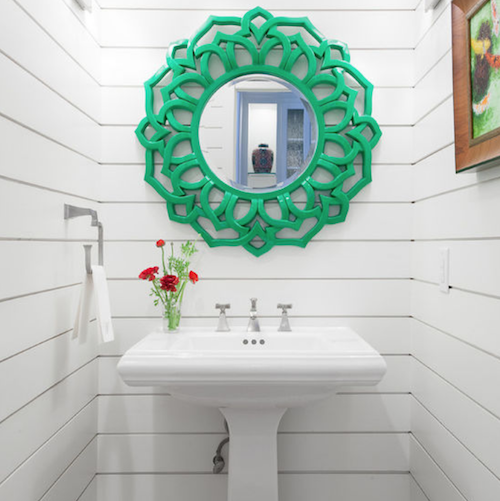
Decorating with shiplap seems to be all the rage these days thanks to Fixer Upper and other popular TV shows. Consistently, the most popular post on this blog right now is No Joanna, That’s Not Shiplap which I wrote to poke a little fun at Joanna Gaines for her seemingly constant diagnosis of shiplap, whether a wall is true shiplap or not.
It’s all in good fun, and because of her and Chip, the world has gone shiplap crazy! People ask me all the time where they can find shiplap or if this or that qualifies as shiplap and most commonly, how to make shiplap. I figured answering this last one would help my DIY readers with their shiplap needs the most.
In this post, I’ll show you exactly how you can make shiplap from almost any piece of lumber old or new. You need only have the wood and a table saw. Even if you have only minimal DIY skills, you can make shiplap on your own.
How To Make Shiplap
Select Your Stock
Depending on the final look you want, there are a ton of wood options you can use to make shiplap. Almost any 1x material (nominal 3/4″) is a good choice. You can use select grade for a super smooth look or common grade boards, pine, cedar, really any type of solid wood that suites your needs.
You can also use salvaged boards for that awesome rustic look we love. You can stain or paint or leave it raw. This part is completely up to you and only you. I will say that traditional shiplap is usually between 5″ and 8″ wide, so using boards in that range will yield the most realistic looking results. For these pictures, I used some salvaged 1×6 pecky cypress boards around my shop.
Set Saw Depth
You have to set both the height of your blade and the rip fence to make the 2 cuts necessary for shiplap. Usually, a depth of half the thickness of the board is best. So, for a 3/4″ thick board, that would mean setting the blade height to 3/8″ as well as the rip fence to 3/8″.
If you have a dado blade, then you can do this in one pass. It’s not necessary, though it does make it much faster if you have a lot of shiplap to make. To use a dado, just set the thickness of your dado to the same 3/8″.
Rip Flat
Lay the board flat on the table saw and rip the back face once. Then, flip it over and rip the front face on the opposite end of the board. You should be left with a single saw kerf on opposite sides and faces of the board.
Rip on Edge
Now stand the board up on its edge, and without changing the settings on the saw, rip both edges of the board. A 3/8″ sliver of wood should come off of each edge. Your board should now have two 3/8″ rabbets on opposing sides and will resemble the letter “Z”. For the wood dorks like me, this joint you have just created is called a half-lap joint.
5¢ Spacing
Depending on the look you want, you can space your boards right up against each other as this half-lap joint will allow them to self-space tightly. Or you can get that joint to show a bit more if you’d like by using a spacer.
What spacer should you use? Good question. I use a nickel. Raid the coin jar and grab a handful of nickels and place them in the joint so that there will be a small gap between the joints before you nail things in place. This helps give the wood some space for expansion and contraction with the weather as well as adds some visual interest to the wall. Really, you can use any thickness spacer to attain the look you want.
Nail it Up
Start at the bottom which is easiest, and make sure that first board is perfectly level, otherwise the whole wall will be askew. Plan your layout as best as you can to avoid awkward small pieces. The top most board will not need the top rabbet cut out of it so that the wall looks uniform.
I prefer to nail with 15 or 16 ga nails since they have more vertical holding power to keep things from sagging. Make sure you are nailing into the studs, just like when installing beadboard, and you’ll have no problems. If you have trouble finding the studs, try these tricks. Don’t forget to set the nails back behind the surface so you don’t get any snags or scratches.
Now you know how to make shiplap on your own, so there’s no reason to not add some to your house if you don’t already have this stylish wall covering. Shiplap adds a ton of character and warmth to a room, and with this technique, you can make more than enough shiplap without having to comb through salvage yards for hours on end.
If there is any other way I can help you get your shiplap on, leave me some feedback in the comments below.
Subscribe Now For Your FREE eBook!

Founder & Editor-in-Chief
I love old houses, working with my hands, and teaching others the excitment of doing it yourself! Everything is teachable if you only give it the chance.

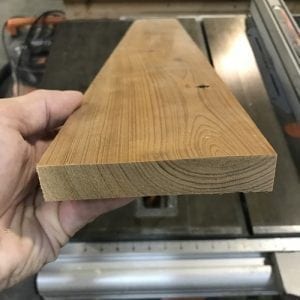
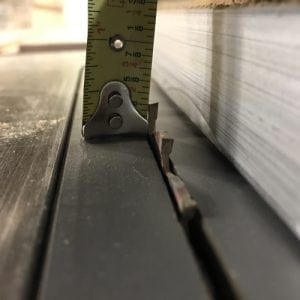
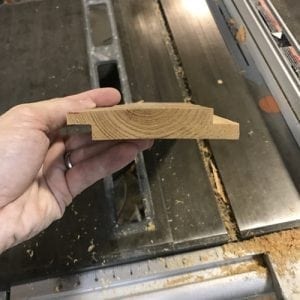
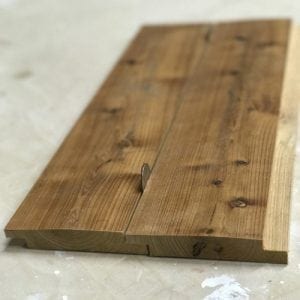

Hey thanks for the video. I am placing these on a dresser top and am trying to snug them against each other as tight as I can. The wood has been sitting for a while and I do not suspect and significant moisture in them. Will I still get movement from them and risk them cracking or warping? I am selling this price so want it nice. Also I started in the middle of my 16X60 top and worked my way around that leaving edge prices around 2 1/2” width. I staggered them to mismatch the seems and plan to stain and seal them. Thoughts?
Hey, don’t have any insight but I am wondering how it turned out. I happened on some free 2x4s and I am thinking about ripping them down to 1×4 (3/4 x 3 1/2 nominal, we say nominal like that makes it right) then doing a half-lap to make the ceiling for my runabout. Since its salvaged wood, I plan to make the ripped edge visible, for the smoothish surface and either stain or just varnish it. So my question… anybody can answer…, what’s the best way to join them without visible nails or screws?
Was thinking about doing shiplap with just straight 1×4 boards without any kind of notch in them. Good idea or no? I know people do it with pallet boards so it’s kind of the same concept. Just with good lumber from Home Depot. Any insight would be appreciated.
Hey, don’t have any insight but I am wondering how it turned out. I happened on some free 2x4s and I am thinking about ripping them down to 1×4 (3/4 x 3 1/2 nominal, we say nominal like that makes it right) then doing a half-lap to make the ceiling for my runabout. Since its salvaged wood, I plan to make the ripped edge visible, for the smoothish surface and either stain or just varnish it. Oh, all I have is a table saw.
Almost impossible to find replacement shiplap board that matches my house siding 3/4″ thick by 7 1/2″ width.
The lumber companies are shrinking the size to 5/8″ thick by 7″ width.
Can’t replace a bad siding board with these. Looks bad and rain will eventually get through non-over lapping board even if you caulk it
I only have a 10″ table saw with a narrow style Diablo blade.
What’s the best way to make a board? Cut on edge, use dado blade, use router?
Will a new board wedge up and into the middle of the wall?
I bought some rough cut boards from my localmill and they are all cut to 1″. You can then grind/cut then down to the thickness you’d like. I’m just leaving mien at 1″ to save time though 🙂
I’m finding the cost of precut shiplap is no more than purchasing straight cut material and making your own. Am I I looking in the wrong places for material?
Yep. Go to a mill, or post an AD on facebook marketplace. or just SHOP facebook marketplace. I found a place re-selling for $1.05 a square board foot for cabin grade shiplap (white pine). Some was in rough shape, but still can’t beat the price!